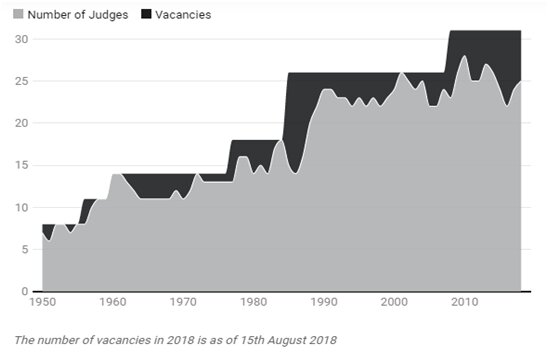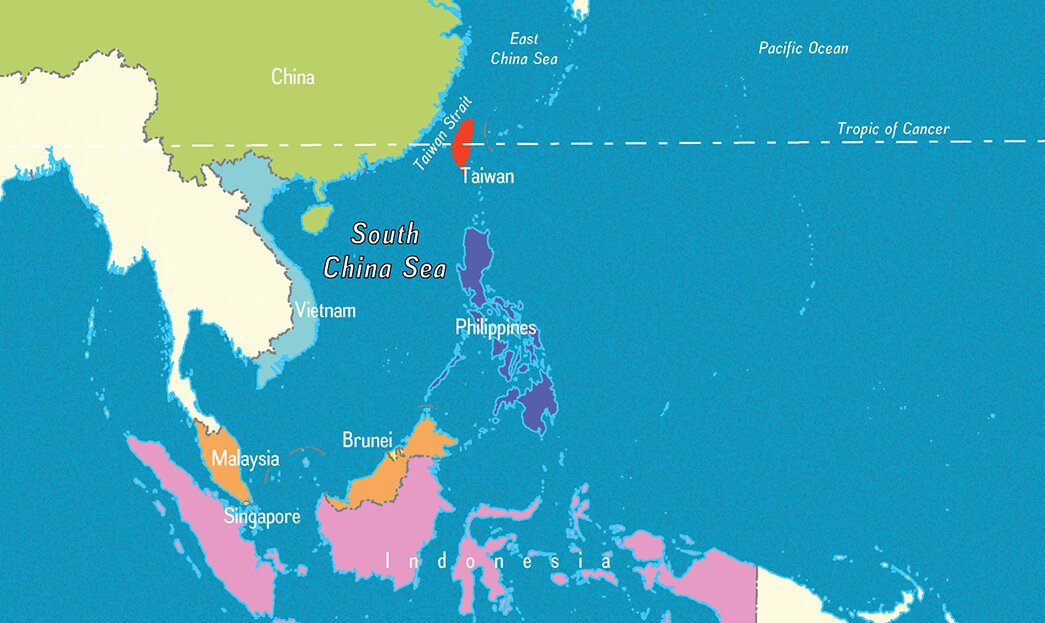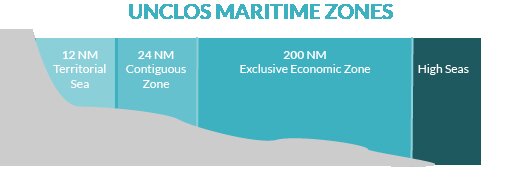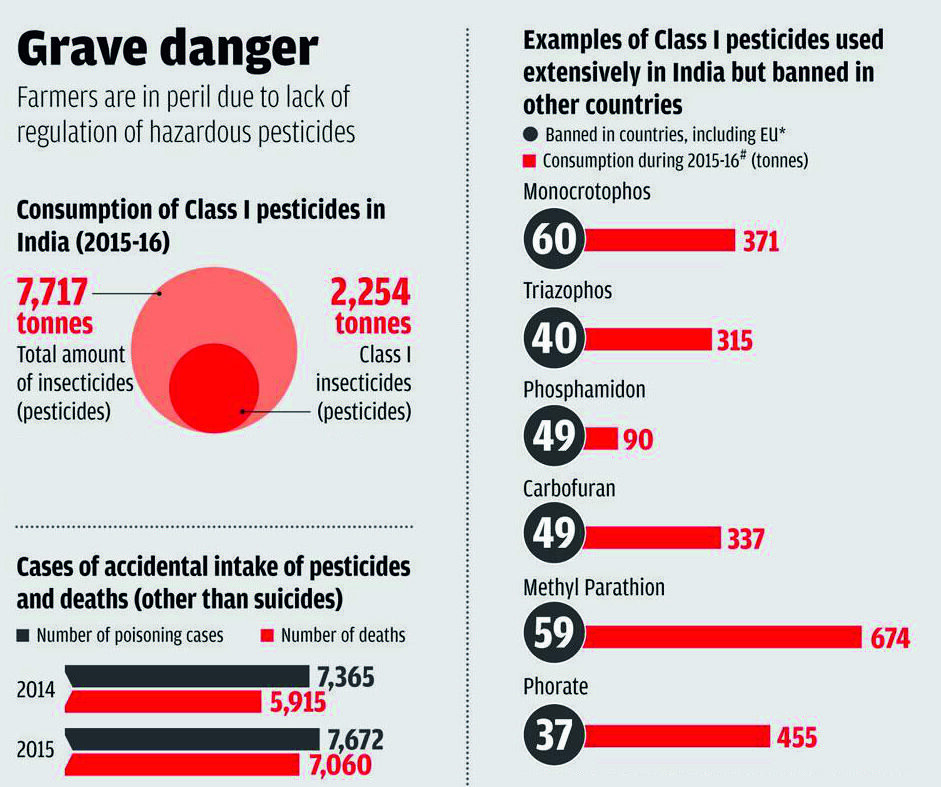Agriculture
The Protection of Plant Varieties and Farmers’ Rights Act
The Protection of Plant Varieties and Farmers’ Rights Act (PPVFRA), which introduced intellectual property protection in Indian agriculture, faced its biggest test when PepsiCo India initiated legal proceedings against potato farmers of Gujarat for “illegally” growing its potato variety registered under the PPVFRA.
History of PPVFRA
- The PPVFRA was enacted in 2001 after engaging debates were held in the country on how intellectual property rights should be introduced in Indian agriculture after the country joined the World Trade Organisation in 1995 and agreed to implement the Agreement on Trade-Related Aspects of Intellectual Property Rights (TRIPS).
- The choice before India was to either enact a law that protected the interests of farming communities or to accept the framework of plant breeders’ rights given by the International Union for Protection of New Plant Varieties (UPOV Convention). The latter option was rejected primarily because the current version of UPOV, which was adopted in 1991, denies the farmers the freedom to reuse farm-saved seeds and to exchange them with their neighbours.
- Therefore, in the PPVFRA, India introduced a chapter on Farmers’ Rights, which has three legs:
- one, farmers are recognised as plant breeders and they can register their varieties;
- two, farmers engaged in the conservation of genetic resources of landraces and wild relatives of economic plants and their improvement through selection and preservation are recognised and rewarded; and,
- three, protecting the traditional practices of the farmers of saving seeds from one harvest and using the saved seeds either for sowing for their next harvest or sharing them with their farm neighbours.
PepsiCo issue
- The company applied for the registration of two hybrid potato varieties FL 1867 and FL 2027 in February 2011.
- These varieties were registered under the PPVFRA in February 2016 for a period of 15 years. PepsiCo marketed the latter variety under the trademark FC-5 and was claiming that the Gujarat farmers were illegally using this variety.
- But, planting a registered variety by the farmers is per se not an offence since the PPVFRA allows the farmers to re-use such varieties and to also share them with their neighbours, provided some conditions are met.
- One is that the farmers cannot sell “branded” seeds, which, according to PPVFRA, means “any seed put in a package or any other container and labelled in a manner indicating that such seed is of a variety protected” under the Act.
- The company claimed before the court that FC-5 was licensed to farmers to bring potatoes of the said variety on the buyback system. The FC-5 variety could have been made available and distributed anywhere, and without the law being violated.
- Also, the FC-5 was registered as an “Extant Variety”, which is also a “Variety of Common Knowledge”. It implies that the said variety of potato was already available in the country before it was registered and that there was “common knowledge” about this variety in the country.
International Union for Protection of New Plant Varieties (UPOV Convention)
- The International Union for the Protection of New Varieties of Plants (UPOV) is an intergovernmental organization with headquarters in Geneva (Switzerland).
- UPOV was established by the International Convention for the Protection of New Varieties of Plants. The Convention was adopted in Paris in 1961 and it was revised in 1972, 1978 and 1991.
- UPOV's mission is to provide and promote an effective system of plant variety protection, with the aim of encouraging the development of new varieties of plants, for the benefit of society.
- The UPOV Convention provides the basis for members to encourage plant breeding by granting breeders of new plant varieties an intellectual property right: the breeder's right.
- In the case of a variety protected by a breeder's right, the authorization of the breeder is required to propagate the variety for commercial purposes. The breeder's right is granted by the individual UPOV members.
- Only the breeder of a new plant variety can protect that new plant variety. It is not permitted for someone other than the breeder to obtain protection of a variety.
- There are no restrictions on who can be considered to be a breeder under the UPOV system: a breeder might be an individual, a farmer, a researcher, a public institute, a private company etc.
- India is not a member.
Indian Polity
Supreme Court’s Strength
Recently, the Supreme Court Collegium recommended the names of four judges separately, to be elevated to the Supreme Court, out of which the government disapproved the elevation of two judges (Jharkhand High Court Chief Justice Aniruddha Bose and Gauhati High Court Chief Justice A.S. Bopanna).
However, the Collegium refused to reconsider its recommendation and resent the file to the government for final approval.
If the four judges are elevated, the Supreme Court would reach the full sanctioned strength of 31.
Strength of Supreme Court
- The original Constitution of 1950 envisaged a Supreme Court with a Chief Justice and 7 puisne Judges - leaving it to the Parliament to increase this number.
- As the work of the Court increased and arrears of cases began to cumulate, the Parliament increased the number of Judges from 8 in 1950 to 11 in 1956, 14 in 1960, 18 in 1978 and 26 in 1986.
- In February 2009, the number of Supreme Court judges increased from 26 to 31, including the Chief Justice of India.
- However, strength of Supreme Court is rarely full due to the following reasons:
- Difficulty in finding judges
- Courts’ mandatory retirement ages: High Court judges retire at the age of 62, and Supreme Court judges at 65, which, by global standards, are low retirement ages. In the UK, Supreme Court judges retire at 75, in Australia at 70 and in the US, there is no mandatory retirement age. Low retirement ages create short tenures and frequent vacancies.
Supreme Court is Rarely Full
What is Collegium System?
- The Collegium System is a system under which appointments/elevation of judges/lawyers to the Supreme Court and transfers of judges of the High Courts are decided by a forum of the Chief Justice of India and the four senior-most judges of the Supreme Court.
- The Collegiums System of appointment of judges finds its genesis from the “Three Judges Case, 1998”.
- The Central Government may require the Collegium to reconsider its recommendations only once, as the recommendations are binding on the Central Government if the Collegium sends the names of the judges/lawyers to the government for the second time.
International Relations
Group Sail Naval Drill
Recently, warships from India, the US, Japan and the Philippines conducted a six-day naval drill ‘Group Sail’ in the contentious South China Sea.
Key Points
- The Group Sail was aimed to deepen the existing partnership and foster mutual understanding among the participating navies.
- It showcased India’s commitment to operating with like-minded nations to ensure safe maritime environment through enhanced interoperability.
- In the backdrop of China’s aggressive and expansionist behaviour in the South China Sea, India has consistently reiterated the need for all countries to respect the freedom of navigation in international waters and overflight consistent with international law, including the United Nations Convention on the Law of the Sea (UNCLOS) of 1982.
- The strategically important waterway is claimed almost in its entirety by China, but this is hotly disputed by Beijing’s neighbours like Vietnam, Philippines, Indonesia, etc. The sea is estimated to have a vast reserve of hydrocarbons.
- In July 2016, the Permanent Court of Arbitration at the Hague issued its ruling on a claim brought against China by the Philippines under UNCLOS, ruling in favour of the Philippines on almost every count.
- While China is a signatory to the treaty, which established the Court, it refuses to accept the court’s authority.
Issues Involved
- The exercise comes at a time when India has been warily looking at increased Chinese activity in the northern Indian Ocean, traditionally seen as India’s backyard. The presence of Chneise ships and submarines has been on the rise.
- In 2017, China opened its first overseas military facility in Djibouti and has also been investing heavily in infrastructure along Africa’s eastern coast – in Tanzania and Kenya – as part of its ambitious Belt and Road Initiative (BRI).
- These activities reflect China’s attempt to encircle India through different base around its neighbouring countries, popularly known as "String of Pearls".
- The String of Pearls is a geopolitical theory related to potential Chinese intentions in the Indian Ocean region. It refers to the network of Chinese military and commercial facilities and relationships along its sea lines of communication, which extend from the Chinese mainland to the Sudan Port.
United Nations Convention on the Law of the Sea (UNCLOS)
- The 'Law of the Sea Treaty’, formally known as the United Nations Convention on the Law of the Sea (UNCLOS) was adopted in 1982 to establish jurisdictional limits over the ocean areas.
- The Law of the Sea Convention introduced a number of provisions and covered the most significant issues such as setting limits, navigation, archipelagic status and transit regimes, exclusive economic zones, jurisdiction of continental shelf, deep seabed mining, exploitation regime, protection of the marine environment, scientific research, and settlement of disputes.
- India became a signatory to the UNCLOS in 1982.
- UNCLOS created three new institutions:
- International Tribunal for the Law of the Sea: It is an independent judicial body established by UNCLOS to adjudicate disputes arising out of the convention.
- International Seabed Authority: It is a UN body set up to regulate the exploration and exploitation of marine non-living resources of oceans in international waters.
- Commission on the Limits of the Continental Shelf: It facilitates the implementation of the UNCLOS in respect of the establishment of the outer limits of the continental shelf beyond 200 nautical miles.
- The convention defines the distance of 12 nautical miles from the baseline as Territorial Sea limit and a distance of 200 nautical miles as Exclusive Economic Zone limit.
Biodiversity & Environment
BRS Conventions COP Meet in Geneva
- The “Triple COPs” meeting is taking place in Geneva, Switzerland from April 29th to May 10th, 2019.
- Basel Convention (COP-14)
- Rotterdam Convention (COP-9)
- Stockholm Convention (COP-9)
- The “Triple COPs” are being convened under the theme, 'Clean Planet, Healthy People: Sound Management of Chemicals and Waste’.
Issues under discussion
- BRS “Triple COPs”: is discussing issues relating to microplastics, waste containing nanomaterials, and legal, compliance and governance matters, among others.
- The meeting is also considering further development of technical guidelines on e-waste as well as persistent organic pollutants wastes, incineration on land and specially engineered landfills and additions to the Convention’s Toolkit on Environmentally Sound Management of Wastes.
- It is taking up various matters related to the implementation of the Convention, including the strategic framework, entry into force of the Ban Amendment, and the Cartagena Declaration on the Prevention, Minimization and Recovery of Hazardous Wastes and Other Wastes.
The Basel Convention: came into force in 1992, intends to reduce transboundary movements of hazardous waste from developed to less developed countries (LDCs), and ensure their safe disposal as closely as possible to the source of generation.
Rotterdam Convention: was adopted on 10th September 1998 by a Conference of Plenipotentiaries in Rotterdam, Netherlands and entered into force on 24th February 2004.
- It covers pesticides and industrial chemicals that have been banned or severely restricted for health or environmental reasons by Parties and which have been notified by Parties for inclusion in the Prior Informed Consent (PIC) procedure. The Convention creates legally binding obligations for the implementation of the Prior Informed Consent (PIC) procedure.
The Stockholm Convention: is a global treaty to protect human health and the environment from persistent organic pollutants (POPs). POPs are chemicals that remain intact in the environment for long periods, become widely distributed geographically, accumulate in the fatty tissue of living organisms and are toxic to humans and wildlife.
- The objectives of the Stockholm Convention are:
- Support the transition to safer alternatives
- Target additional POPs for action
- Cleanup old stockpiles and equipment containing POPs
- Work together for a POPs-free future
- The Global Environmental Facility (GEF) is the designated interim financial mechanism for the Stockholm Convention.
Biodiversity & Environment
Pesticide Ban
California is banning a widely used pesticide that has been linked to brain damage in children. The state ban on Chlorpyrifos, a pesticide used on almonds, citrus, cotton, grapes, walnuts and other crops, follows years of research finding the chemical causes serious health effects in children, including impaired brain and neurological development.
Status of pesticide ban in India
- With the increasing number of farmer deaths due to pesticide poisoning and submission of Anupam Verma Committee report the Union Ministry of Agriculture and Farmers Welfare had notified Pesticides (Prohibition) Order, 2018 under which use of 18 pesticides was banned.
- Of these 18, 12 pesticides have been banned from immediate effect (from August 9, 2018) and ban on another six will be implemented from December 31, 2020. The ban applies to registration, import, manufacture, formulation, transport, sale and use of all these pesticides.
Why class 1 pesticide should be banned India?
- Pesticides whose handling and application require the use of personal protective equipment that is uncomfortable, expensive or not readily available should be avoided, especially in the case of small-scale users and farm workers in hot climates.
- It is impossible to ensure use of personal protective equipment by small-scale farmers and farm workers in India.
Other reasons
- Every year, there are about 10,000 reported cases of pesticide poisoning in India.
- Lack of awareness, no initiative by govt agriculture depart to teach how to use pesticide.
- Unapproved use of pesticides—spraying a particular pesticide on a crop for which it is not allowed— continues to be a big problem in the country.
How pesticide can impact humans?
- Endocrine disruptors: The term endocrine disruptor refers to substances that interfere with hormones and hormone balance.
- Hormones are the chemical messengers of the body. They are necessary to regulate different functions, in particular growth and reproductive functions.
- The endocrine effects can be activated by very low concentrations of chemicals. They can manifest as:
- reduced semen quality with consequent decreased fertility, genital malformations, testicular and prostate cancer
- early puberty, appearance of cysts in the ovaries, uterus anomalies, breast cancer, pregnancy complications with early abortions, decreased fertility
- diabetes and obesity
- neurological disorders, especially disorders in brain development, and degenerative diseases in the brain, such as Parkinson’s disease
- hyper and hypo thyroidism and thyroid tumours.
Acute toxicity
Pesticides can be acutely toxic. This means that they can cause harmful or lethal effects after one single episode of ingestion, inhalation or skin contact. The symptoms are evident shortly after exposure or can arise within 48 hours. They can present as:
- respiratory tract irritation, sore throat and/or cough
- allergic sensitisation
- eye and skin irritation
- nausea, vomiting, diarrhoea
- headache, loss of consciousness
- extreme weakness, seizures and/or death
Long term (or chronic) toxicity
- Pesticides can cause harmful effects over an extended period, usually following repeated or continuous exposure at low levels. Low doses don’t always cause immediate effects, but over time, they can cause very serious illnesses.
- Long term pesticide exposure has been linked to the development of Parkinson’s disease; asthma; depression and anxiety; cancer, including leukaemia and non-Hodgkin lymphoma; and attention deficit and hyperactivity disorder (ADHD).
Science & Technology
India Adds 40mn New Internet Users Each Year
According to Google’s ‘Year in Search - India: Insights for Brands’ report, an estimated 40 million Indians are joining the internet bandwagon annually, and this rate of expansion is among the fastest in the world.
Key Findings
- At 400 million active internet users, India is the second largest internet user market after China.
- The average mobile data usage per subscriber is pegged at about 8GB a month, which is at par with the consumption seen in developed markets.
- 9 out of 10 new internet users in India are likely to be Indian language users.
- There have been 270% growth year-on-year in voice searches on Google’s platform and consumers across categories are fast adapting to this new search tool for seeking information and discovering content.
- Audience for online videos is poised to touch 500 million by 2020.
Positive Impact
- As more and more Indians are using the internet, the problem of 'digital divide' in the country will get resolved.
- More and more players across several digital platforms will adopt a regional content strategy to reach out to the Indian masses.
- The attitudinal shift to online services will aid in digital banking, digital governance etc.
Way Forward
- Low data speed and unstable connection coupled with low broadband penetration are still prevalent in India. These infrastructural issues need to be resolved, along with adequate digital safety of infrastructure and users.
Important Facts For Prelims
Important Facts For Prelims (10th May 2019)
Barn Owl Campaign in Lakshadweep
- The Union Territory of Lakshadweep has recruited three pairs of barn owls from Kerala to hunt down rats responsible for deteriorating its coconut yield.
- Coconut is an important money-spinner for the islands; pesky rodents account for 30 to 40% of the yield loss.
- The three pairs of barn owls will gradually be released into the coconut plantations under a closely monitored breeding and rodent management programme.
- In Lakshadweep islands, rats live on the treetops. In fact, the fronds overlap, allowing the rodents to move easily from one tree to another. This is the reason for not employing accomplished rat hunters like cats or rat snake for the purpose.
- Barn owl is a natural rat hunter, armed with a powerful auditory mechanism.
- The Union Territory of Lakshadweep has gone for this biocontrol measure as islands are a designated organic zone, where the use of chemicals for pest control is not allowed.
- Biological control is an environmentally sound and effective means of reducing or mitigating pests and pest effects through the use of natural enemies.
- Basically, it is an action of parasites, predators, or pathogens in maintaining another organism's population density at a lower average than would occur in their absence.
- The common barn-owl (Tyto alba) belongs to the family of owls, Tytonidae.
- The species are distributed in Indian subcontinent, Australia, Africa, Europe, Southeast Asia, Middle-East, Europe, North America, South America and Caribbean Islands.
- It is listed as 'least concern’ in the IUCN red list.
- It comes under Schedule IV of the Indian Wildlife Protection Act, 1972.
Grizzled Giant Squirrel
- Researchers have sighted nests of the grizzled giant squirrel(Ratufa macroura), at Pakkamalai Reserve Forest near Gingee, Tamil Nadu, in the Eastern Ghats.
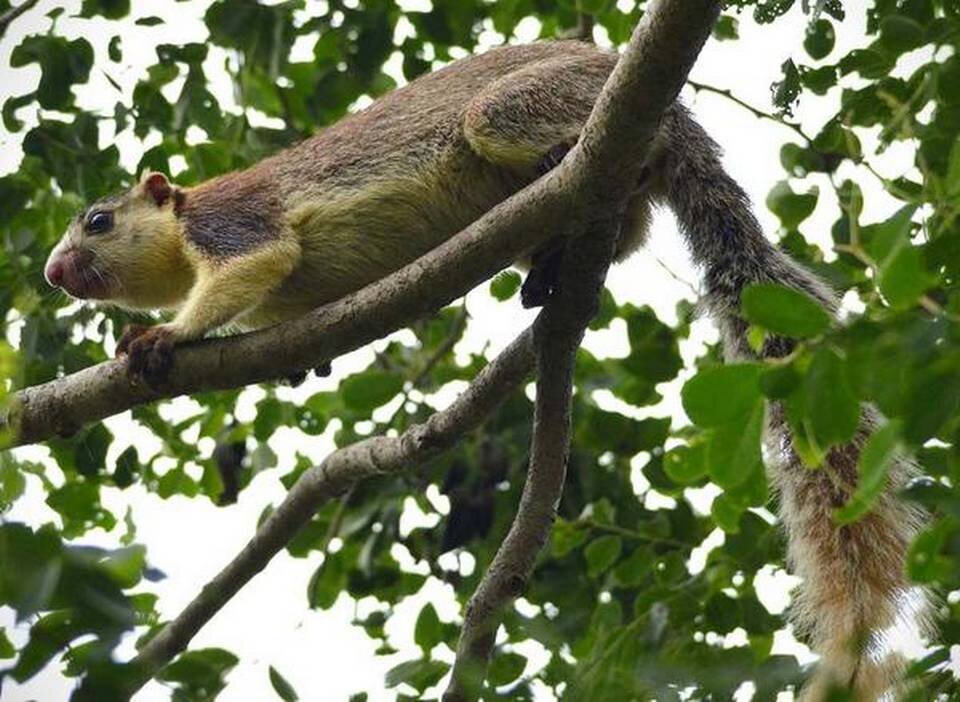
- Earlier it has also been spotted in Tiruvannamalai forest, TN in the Eastern Ghats.
- The grizzled giant squirrel is endemic to western ghats, usually known to nest in the region ranging from Chinnar Wildlife sanctuary in Kerala to Anamalai Tiger Reserve and Palani hills in Tamil Nadu.
- Grizzled giant squirrels are named for the white flecks of hair that cover their greyish-brown bodies, giving them a grizzled look.
- Grizzled Squirrel Wildlife Sanctuary is located in Srivilliputtur, Tamil Nadu.
- Status of Grizzled Squirrel- It is listed as
- Near threatened category in IUCN Red List.
- Listed under Schedule II of CITES.
- Listed under Schedule I of the Wildlife Protection Act, 1972.
- The threat: to the population by increased predator pressure and the extremely low regeneration of its preferred food plant species due to heavy grazing by cattle.
- Habitat loss coupled with hunting for its fur and bushmeat by the locals are said to be the major threats to this species.
Tuila: One-Stringed Instrument
Tuila is a one-stringed instrument native to the tribal communities of Jharkhand and Odisha. It belongs to the chordophone category, which is a class of musical instruments in which a stretched, vibrating string produces the initial sound.
- Tuila is also known as Uhila, Como Ohila and Toila.
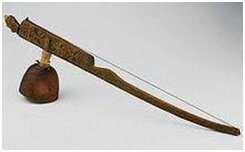
- It is made of bamboo - Mundari Pani Bansu.
- A piece of wood known as Ghoda is attached to one end.
- The upper end of the instrument is tied loosely to a half-sliced gourd resonator, usually pumpkin, which produces a unique sound.
- The resonator is tightened via a short tubular Khimki by using a chord. This is made of horse hair and is attached to short pieces of wood on the inside.
- The string, which is usually made up of cotton yarn or silk, is tied to the instrument. It is fixed directly to the pipe with a loop and several windings.
How is it Played?
- The playing technique is unique with only three fingers being used to play the notes.
- Tuila is generally played by men, while Kendra (female compatriot of Tuila) is played by women.
- Tuila is played as an accompaniment for vocal performances in the folk communities of Odisha and Jharkhand.
- The women sing and the men play the Tuila. The instrument is also part of the wedding bands in the tribal region.
- Lord Siva can be seen holding this instrument in the sculpture on the Dharmaraja Ratha at Mahabalipuram. It is also found at the Kailasanathar and Vaikuntha Perumal temples.
Gopal Krishna Gokhale
The Prime Minister of India on 9th May, 2019 paid a tribute to the freedom fighter Gopal Krishna Gokhale on his 153rd birth anniversary.
Some Facts about Gopal Krishna Gokhale
- He was born on May 9, 1866 in Ratnagiri, Maharashtra.
- He joined the Indian National Congress in 1889.
- In 1905, Gokhale was elected as the President of the Indian National Congress.
- He founded the Servants of Indian Society in 1905. The main objective of this society was to train Indians to raise their voice against social evils and serve their country.
- He is known to be a mentor to Mahatma Gandhi. Mahatma Gandhi even wrote a book called, 'Gokhale, My Political Guru'.
Double Asteroid Redirection Test (DART)
- NASA is planning to launch a DART mission by a SpaceX Falcon 9 rocket that will hit a small moonlet in the binary near-earth asteroid system Didymos in September 2022.
- It is a planetary defence technique, scheduled to be launched in mid-2021.
- DART mission will be the first ever space mission to demonstrate asteroid deflection by a kinetic impactor. It is planned to intercept the secondary member of the Didymos system.
- By using solar electric propulsion, it will intercept the target when the asteroid will be within 11 million km of Earth.

